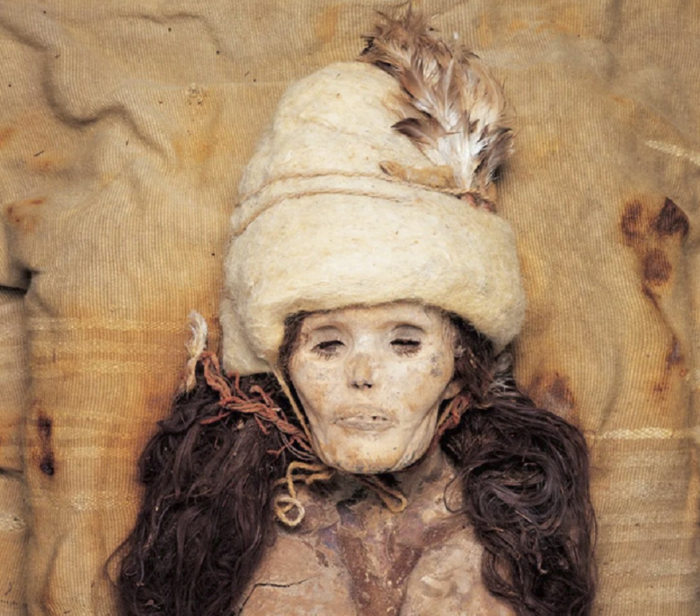A genetically isolated population, but culturally very cosmopolitan: so was the indigenous civilization that in the Bronze Age lived in western China, in the Tarim river basin, along the Silk Road: the hundreds of Western discoveries in this area in the 90s and whose DNA has now been analyzed. The result is published in the journal Nature by the Chinese Jilin University and the German Max Planck Institute of Anthropology.
Found in the autonomous region of the Uighurs, the mummies have been a mystery so far. They date back to the period between 2000 BC and 200 AD and have attracted the attention of scholars for their western aspect, with wool and felt clothes and their agro-pastoral economy.
Until now it was believed that they were descendants of the Yamnaya, breeders who migrated to that area from the steppes of the Black Sea, or that they originated in the desert of Central Asia, in the cultures of the Bactria-Margiana archaeological complex, genetically linked to the first breeders of the Iranian highlands.
The analysis of DNA extracted from 13 mummies from the Tarim basin dating back to the period between 2,100-1700 BC, and from five mummies from the period between 3000-2800 BC, found in the nearby basin, has now allowed us to have the first reliable data. by Dzungarian. Thus it emerged that the Tarim mummies did not belong to newcomers to the region, but to direct descendants of a widespread population in the Pleistocene, then largely disappeared at the end of the last ice age.
These are the Eurasians of the ancient North, still present in the genome of some current populations, such as the indigenous ones in Siberia and the Americas.
However, the Tarim mummies do not show any trace of genetic mixing: despite this their genetic isolation, they were culturally cosmopolitan.
The proteomic analysis of their dental calculations indicates that the dairy production from cattle, sheep and goats was already practiced by them and they knew well cultures, cuisines and technologies of different cultures close to them.





/cloudfront-eu-central-1.images.arcpublishing.com/prisa/2P2FATFESJDD5BB6NR7VLSJ7QY.jpg)









